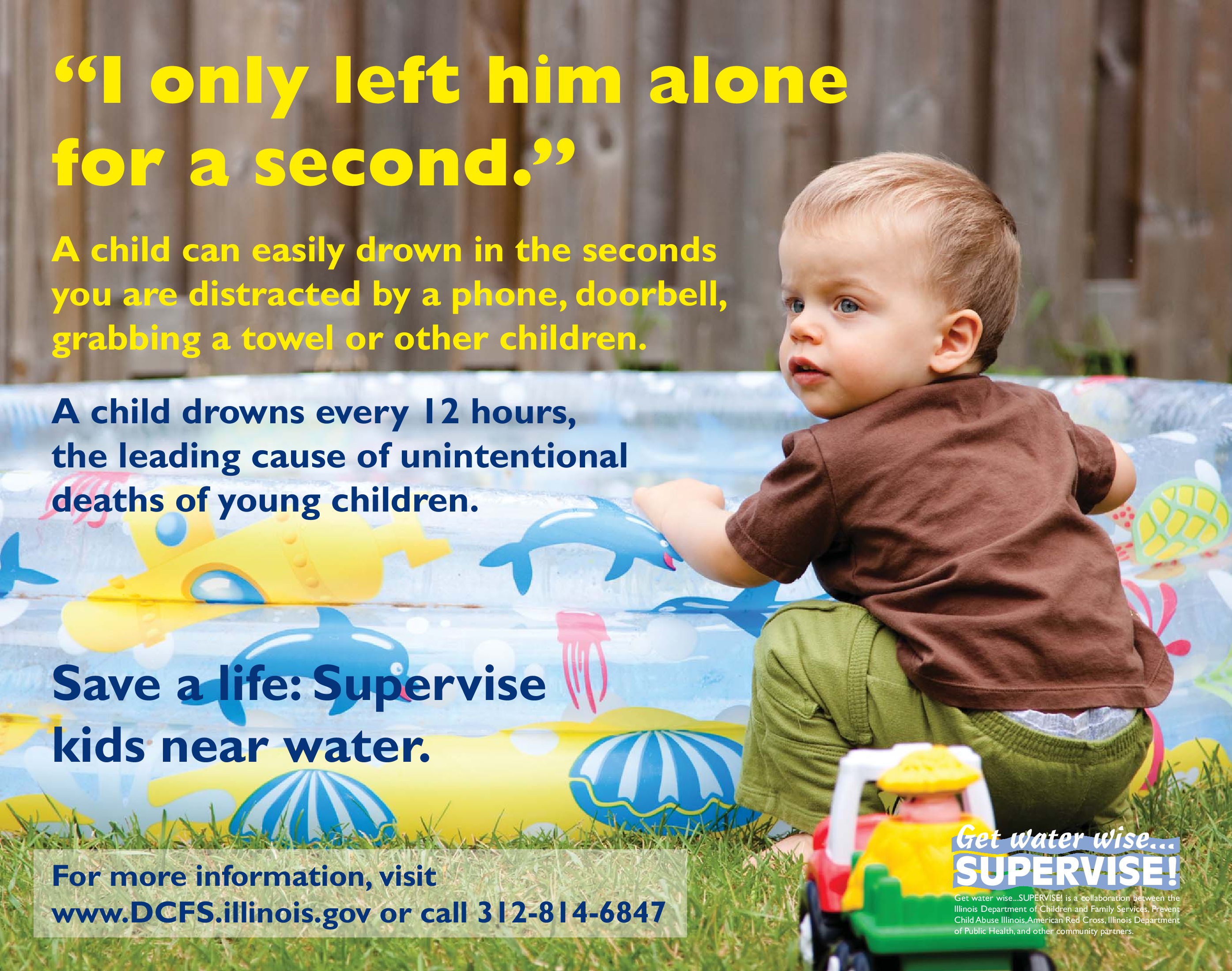Drowning is the leading cause of unintentional death for children ages 1-4.
Most drownings result from inadequate supervision when a caregiver becomes distracted by a phone, doorbell or other children.
Young children drown quickly and silently in as little as one inch of water. For every child who drowns, five more need emergency medical care for injuries that can result in life changing brain damage.
Childhood drownings occur in backyard swimming pools, bathtubs, baby pools, decorative garden ponds, lakes and rivers, ditches and even buckets. The good news is that drowning tragedies can be prevented by constantly supervising children at all times when they are near water.
Swimming pool safety
- Appoint an adult who can swim to watch children while they are in the pool. The supervising adult should not read, talk on the phone, leave or turn her back on the pool area, or do any other distracting activity while watching the children.
- Don’t consider your children to be ‘drown-proof’ because they’ve had swimming lessons.
- Keep ladders, patio furniture and toys away from above-ground pools.
- Fence in your pool completely and install a self-closing, self-latching gate. Pool safety covers and alarms provide added protection.
- Personal flotation devices do not replace adult supervision. They could deflate or slip from underneath a child, leaving him in a dangerous situation.
- Keep pool water clear and remove floats and toys when the pool is not in use. Cloudy water and items floating in the water may prevent a child from being seen.
- Learn CPR and keep rescue equipment, a telephone and emergency numbers near all pools.
Baby pool safety
- Always keep children within arm’s reach when they are in a baby pool.
- Empty the baby pool immediately after use and store it upside-down.
- Don’t be lulled into a false sense of security because of the shallowness of baby pools.
Bathroom safety
- Never leave a young child alone in a bathtub or allow a sibling to watch a younger child. If you need to leave the bathroom, take your child with you.
- Infant bathtubs and bathtub seats are bathing aids, not safety devices.
- Keep the toilet lid down and use a toilet seat lock to keep children from opening the lid.
- Put a latch on the bathroom door to keep children out of the bathroom when unsupervised.
Lake and river safety
- Children should always wear life vests when swimming in lakes and rivers.
- Swimming across a lake or river is not like swimming in a pool. Teach older children that it is unsafe to dive head-first into the water because it may be too shallow; and to stay out of murky or fast-moving water – there may be hidden dangers in the water that can’t be seen by standing on the shore.
Bucket safety
- Five-gallon buckets of water pose a threat to babies and toddlers who may topple into buckets while playing and are unable to free themselves because they lack coordination and upper-body strength.
- Empty and store all buckets out of children’s reach.
Ice safety
- During winter months, be aware of frozen ponds and lakes where ice could be thin. Do not walk or sled on these areas.
Garden pond safety
If you have young children and a garden pond, consider:
- Filling in the garden pond until they are older.
- Installing a rigid screen across the pond to create a secure cover.
- Fencing in the pond area and installing a self-closing gate with a childproof lock.
For more health and safety tips for children – Click Here.
